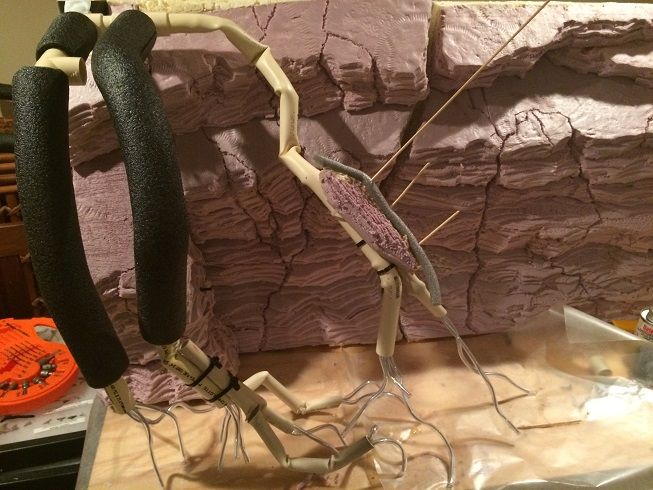I'll document the process of my root building as I go with pics and videos. I may do that in my RC build thread, and also in the DIY and NANFA forum threads. I have some pics in my NANFA thread of my first attempt, but it is different than my current plan. I was going to rely on spray foam a lot more.
Until then, I'll try and post a better explanation of how I'll do this. I'll focus on one section of the root... I'll use a heat gun to soften and bend the PVC pipe. In my previous attempts at this, I worked fast and had the pipes bend at sharp angles. This time, I'm going to go really slow, so I get the nice curves that I want, using heat to make a subtle bend, and then let it cool, and then heat again, repeating this until I get the shape that I want.
Since roots aren't evenly thick, like PVC, that is where the grout comes in, also, to add texture. But, to get the grout to stick to the pipe, I'm going to wrap the pipe with plaster gauze, to give the grout a rough surface to stick to, other than smooth PVC. If you do a search on the net for Craft Wrap - Plaster Cloth Gauze Bandage, you'll see a similar product to what I purchased from a local hobby store. You get this stuff wet, and it sticks to itself and hardens around the PVC pipe, kind of like when you break a bone and they put you in a cast. You can use more or less to also help with thick and thin areas of the "root" along the pipe. For example, if you use PVC junctions to branch off the pipe, the plaster gauze (and grout) can hide the connection joints, and fill in the Y to make it less of a sharp angle and more natural looking.
After that dries, the grout will add weight, texture, and form to the root, as you would using the clay. You can sculpt it, add wood grain look, etc. For smooth areas to simulate where bark might break away, you could sand it down and glue something smooth there to get that texture.
Drylok, with dye, will serve two purposes. One is to add color, of course, and the other is to seal everything inside the root. Since I won't have any fish that can wear the Drylok away, I won't need epoxy.
Below is a pic of my last attempt, using different types of foam to get texture, etc.
Although it started to take shape, I wasn't happy with it at all. Also, my plan then was to rely more on foam to get the texture that I wanted. But, I want my roots to be removable for tank maintenance, and I don't want them to float. That is why I am changing to the grout method.
